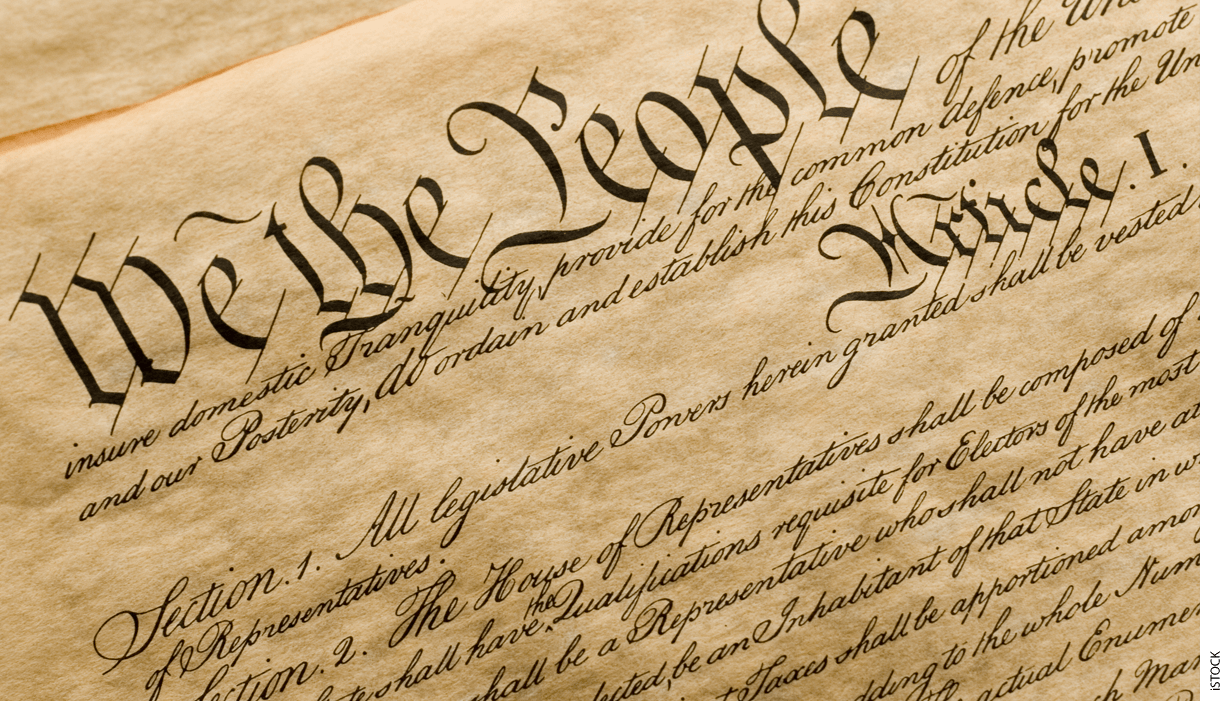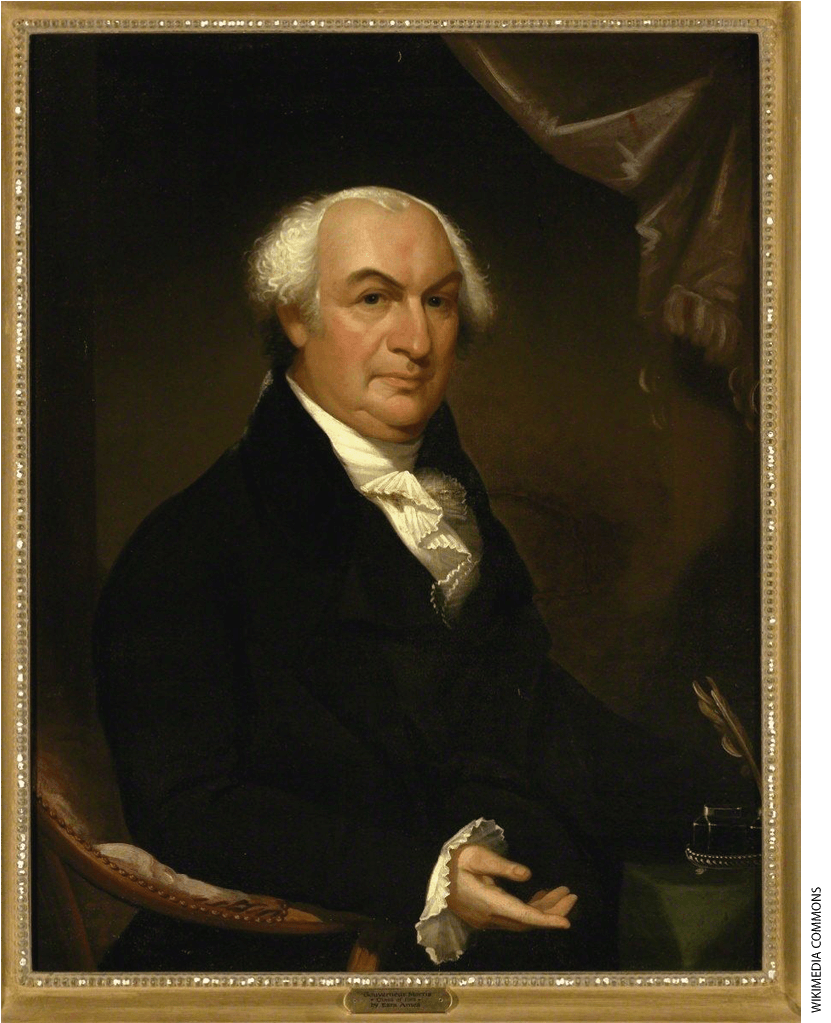
“We, the People of the United States, in Order to form a more perfect Union, establish Justice, insure domestic Tranquility, provide for the common defense, promote the general Welfare, and secure the Blessings of Liberty to ourselves and our Posterity, do ordain and establish this Constitution for the United States of America.”
The preamble to the U.S. Constitution should be familiar to any student who has studied America’s origins in a history or civics classroom. It is short, easy to memorize, and was even good fodder for the musical stylings of School House Rock! in the 1970s.
Beyond the rah-rah patriotism and powdered-wig imagery evoked by those 52 words, the preamble is, in essence, the mission statement of the United States. Its six aspirations articulate the philosophical underpinnings for the structural legal document that follows. If the Constitution lays out the “what” of the United States government, the preamble explains the “why.”
The preamble was somewhat of an afterthought during the 1787 Constitutional Convention in Philadelphia. Only when the Convention’s Committee of Detail began preparing a draft of the Constitution did Virginia delegate Edmund Randolph propose prefatory text, though “[n]ot for the purpose of designating the ends of government and human polities.”
In Randolph’s view, a theory of government had already been appropriately expressed in the establishment of states. A central government could ensure nothing if it did not yet exist (and forming such a government was the purpose of the Convention in the first place). Instead, he argued that any natural rights identified at the federal level should be “interwoven with what we call the rights of states. . . . [T]he object of our preamble ought to be briefly to declare, that the present foederal [sic] government is insufficient to the general happiness.”
Indeed, Randolph’s version of the preamble dryly roll-called all 13 extant states, banding together to establish the Constitution for the governance of themselves and those who would come after—a pure statement of fact.

However, the Convention’s Committee of Style, led by Pennsylvania delegate Gouverneur Morris, must have held a different view on the purpose of the preamble. After leaving the Committee of Detail, the preamble was taken up by the Committee of Style, and within a month, Morris had wordsmithed it to its present form. No notes survive of the committee’s deliberations about the revisions, but neither were there any objections raised when the preamble was presented to the whole Convention. (Those would come later during ratification by the states.)
Why does this matter? The preamble’s shift in focus from a declaration by a confederation of 13 states to a list of goals by one United States of America underscores not only the tension that has always existed around governance within a federal system but, more important, the aspirational nature of a nation that the framers themselves knew was not being delivered to the world fully formed and mature.
The first stated goal of the preamble, that the people of the United States should constantly strive to achieve “a more perfect union,” should be at the forefront of every U.S. history curriculum in every state in the land. The brilliance at the center of that phrasing is an acknowledgment that that work was incomplete at the time the Constitution was written and remains so to this day. Inherent in the goal of a more perfect union is an assurance that, yes, we can be better, along with an admission that, no, our experiment will never be perfect.
A national reckoning with both the achievements and shortcomings of the American promise, past and present, is essential for us citizens to rise above the divisive culture wars that have so recently defined our character and have crept into the classrooms of our children. The resultant tug-of-war that is being waged for hearts and minds can only be undertaken as a zero-sum game.
Meanwhile, American children are caught in the middle, used as political footballs in the ensuing rhetorical clashes. They have no vote, yet they must absorb the legislative fallout of their elders’ pet causes. They may be well protected from uncomfortable topics in their school curricula but not from the bumbling attempts of adults to help them recover from pandemic learning losses.
With hyper-partisanship as the most proximate model for students of what it means to be a citizen, it is small wonder that earlier this year, the Nation’s Report Card revealed that 8th grade scores on the NAEP civics test declined for the first time, matching those achieved on the inaugural test of 1998. The news was even worse for the NAEP U.S. history assessment: a five-point drop since 2018, when it was last administered.
The national conversation about our history needs to change, but we cannot expect this transformation to be initiated by those with such entrenched cultural positions. Instead, we return to the preamble. And the classroom.
Imagine a U.S. history class where the preamble is prominently displayed for all to see—not as a mark of patriotism but as a didactic referent for students to read and internalize the aspirational promises of the United States as identified by the founding generation. Imagine a teacher asking her students, “What does ‘a more perfect union’ look like? What did it look like in 1787? What wasn’t perfect about the United States then? What about today?”
Imagine a conversation in which students are made to feel neither proud nor guilty about the past but instead have an honest confrontation with how their country has been a force for good and how it has perpetuated wretched evils. And imagine students identifying the same characteristics in modern America and being asked, “What can you do to form a more perfect union today?”
The notes of the Constitutional Convention’s Committee of Style are lost to history, but one can infer how the committee arrived at a preamble that has become a national creed. Gouverneur Morris was the most outspoken opponent of slavery among the delegation. According to notes by James Madison, Morris “never would concur in upholding domestic slavery. It was a nefarious institution. It was the curse of heaven on the states where it prevailed.”
But Morris was also a pragmatist. He knew that almost half of the delegates (including Edmund Randolph) owned or had owned slaves. He did not have any hope of forcing the Convention to resolve the matter statutorily, but he recognized a back door when he saw one. The word “slavery” does not appear in the U.S. Constitution, but the preamble reveals Gouverneur Morris’s faith that one day it would be eradicated.
We do a disservice to American students when we catastrophize or mythologize our past instead of guiding them through the complicated, contradictory, and incomplete story of the world’s oldest democracy. A better approach to teaching U.S. history recognizes the country’s challenges, past and present, and exhorts students to think deeply about the role they can play in achieving a more perfect union.
Michael Poor is the interim managing editor of Education Next.


